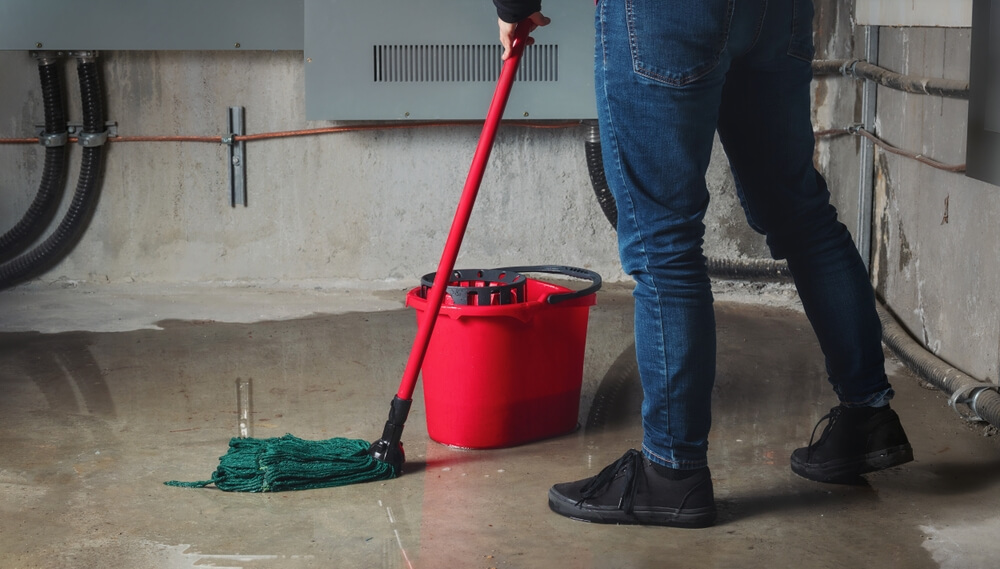
If you are not redirected within 30 seconds, please click here to continue.
Samedi: 10h – 16h HAE

If you are not redirected within 30 seconds, please click here to continue.
If you are not redirected within 30 seconds, please click here to continue.
When to file and not file a home insurance claim

While home insurance is a great way to protect yourself financially in case your property is damaged or destroyed, there are times when filing a claim may not be a good idea.
Insurance is meant for big, sudden expenses – to cover unforeseen accidents like fire or severe weather damage. For instance, if fire damage forces you to spend $50,000 to repair your home , that’s an expense big enough to warrant a claim. On the other hand, if a minor leak damages your basement floor and costs only $900 to repair, then filing a claim may not be worth the hassle and may actually cost more in premium costs in the long run.
With that mind, let’s explore when it is and isn’t a good idea to file a claim and why.
What to consider when filing a claim
There are two major factors you should consider before filing a claim:
1. Your future premium
Every claim you file goes onto your claims record. Your current insurer will use it to set your future premiums – as will any insurer you might sign up with in the future.
The more claims you file and the more expensive they are, the higher your premium is likely to be upon renewal. The type of claim also matters. For instance, a theft claim in a high-crime neighbourhood may lead to a greater premium increase than a claim involving a freak accident like lightning damage, since the former is much likelier to occur repeatedly than the latter.
In extreme cases, annual premiums can go up by as much as 20%, depending on the claim type or amount. That’s an increase of $300 if your premium is around $1,500. If your claim amount does not exceed the potential premium increase, then filing a claim might not be worth it.
Read more: How long does a home insurance claim increase your premium for?
2. Your deductible
Your deductible is the amount you must cover out of pocket every time you file a claim. For example, if your deductible is $1,000 and your claim is $900, then you would have to cover the entire amount yourself (your claim would likely be rejected in this scenario). You select your deductible amount yourself before purchasing your policy.
If the claim is slightly above the deductible (e.g., $1,100), then the insurer would only cover the difference (which, in this case, would be $100). Usually, a claim is only worth filing if it’s significantly higher than the deductible.
Related: How raising your deductibles can help you save on home insurance
When filing a claim is a bad idea
Here’s when filing a claim is likely to be a bad idea:
1. It’s a maintenance issue
Not every type of damage is covered by home insurance. For instance, if there’s something you can do to prevent the damage, your insurance will not cover it. Damage of this type is usually categorized as ‘maintenance.’ Here are some examples:
- Regular wear-and-tear (e.g., leaky roof that hasn’t been repaired in more than 20 years)
- Mold (usually caused by poor insulation or high indoor humidity)
- Pest infestations (e.g., mice, ants, cockroaches, termites, etc.)
Even if the damage caused by the above is severe and costly, your insurance company will not cover it. An old, leaky roof, for instance, can cause damage to your attic and inner walls (in addition to caving in on itself). Insurance is unlikely to cover this if the roof hasn’t been repaired for multiple decades.
2. The damage type in question isn’t covered by your policy
If your home was damaged by something that isn’t covered by your policy, such as overland flooding (which is different from standard water damage by the way), then your claim might be denied. While insurers do cover overland flooding, they usually sell it as an add-on. Here are other examples of incidents covered via add-ons:
- Earthquakes
- Sewer back-up
- Valuables (e.g., expensive jewelry or collectibles)
If you’re worried about any of the above-listed damages, review your policy and consider buying additional coverage, if necessary.
3. You caused the damage yourself
There are multiple ways you might cause damage to your home yourself. You might accidentally ram a piece of furniture into a window while moving it and break the window in the process. Or, you might leave water running in a clogged sink, causing unintended water damage.
You might also damage your home while renovating or repairing it. However, in this case, you can ask your insurer for permission to conduct those repairs or renovations before you start and get the necessary coverage.
4. Your home was vacant
If you’ve left your home vacant for over 30 days, and you don’t have vacant home insurance, you may not be covered for damages that occur while you’re gone. So, if you’re planning to be away for a long time, just make sure your home is protected by the right insurance coverage.
5. You have no proof
If you can’t prove that your home was damaged or that you possessed the items that were damaged, stolen or destroyed, then filing a claim may not work out for you. Make sure you have an inventory of all the items you are filing a claim for, with photos, if possible.
When to file a claim
Sometimes, filing a claim is unavoidable. Here’s when that might be the case:
1. The damage is extremely costly
If the cost of repairing the damage to your home exceeds your deductible by several thousand dollars, then you have a good reason to file a claim.
For instance, if your deductible is $1,000, and the cost of repairing your damaged roof is $8,000, then your insurer should cover all your costs – provided the damage was caused by a covered peril and not general neglect.
This is doubly true if your home was made uninhabitable. For instance, if most of it burns down in a fire, then your insurer will provide the necessary funds to restore it (and even cover your additional living expenses).
2. It’s a covered damage type or peril
If the damage type or peril is covered by your policy, then you’re well within your rights to file a claim. Most standard home insurance policies should cover the following:
- Fire and smoke (regardless of what causes it – whether it’s arson, forest fire, misplaced candle or a stove you forgot to turn off)
- Lightning (applicable if it causes damage to your electronics)
- Theft
- Vandalism
- Severe weather damage
- Liability (applicable if someone hurts themselves on your property or if you or a person under your care damages someone else’s property)
- Water damage (applicable if caused by an indoor or outdoor appliance)
Certain types of damage may only be covered via add-ons, including flooding, sewer back-up and earthquakes.
Learn more: How much home insurance coverage do you actually need?
My claim got rejected – now what?
Home insurance is a great investment, but it’s not going to protect you from everything. You should always have additional protections in place.
Assuming your claim was rejected for legitimate reasons and not some oversight, here are alternative ways to fund your home repairs:
- Tap into your emergency fund: Save up money for emergencies. Budget for an emergency fund and keep growing it. If you realize that you don’t have enough money for such a fund, consider making budget cuts to build one (for instance, you may want to find a cheaper home or finance a cheaper car).
- Use your investments: Invest in something – whether it’s shares or something else – so you can increase your capital. Having money like that available is a good idea for all kinds of reasons, not just emergencies.
- Get a loan: If you don’t have any money available following a disaster, then consider taking out a personal loan from a bank or a credit union. Alternatively, you can tap into a home equity line of credit (HELOC).
At the end of the day, home ownership is your responsibility. Take good care of your home, have some money saved up and invest in proper home insurance coverage. If you do all three, your home should be well-protected – even in the worst-case scenario.
Read next: Home Insurance Savings Guide: 21 Things That Impact Your Rate
Get money-saving tips in your inbox.
Stay on top of personal finance tips from our money experts!










